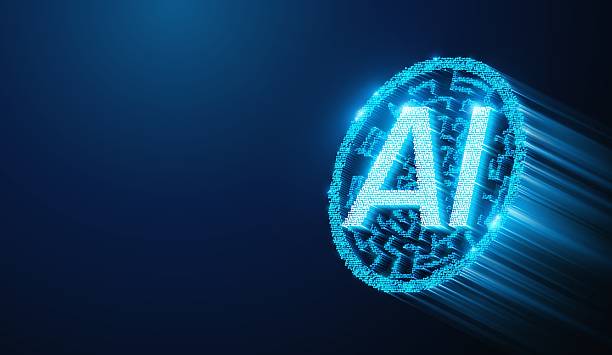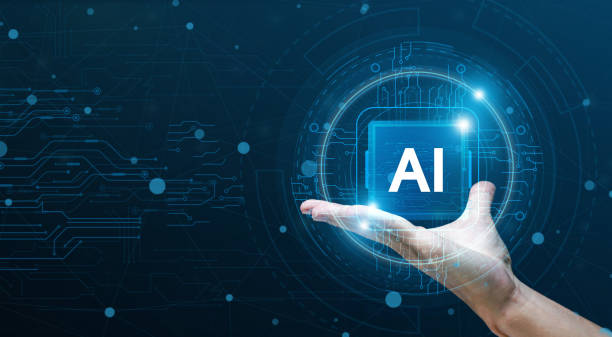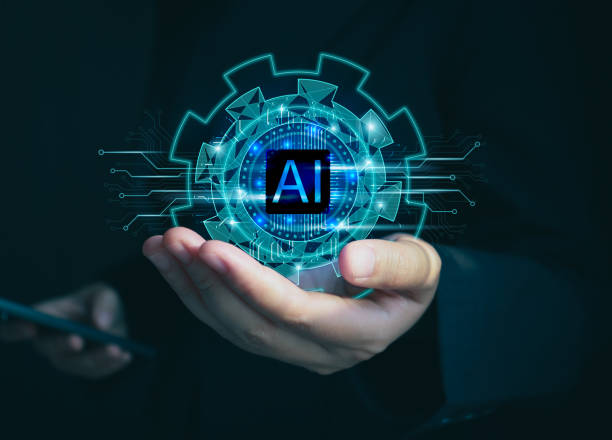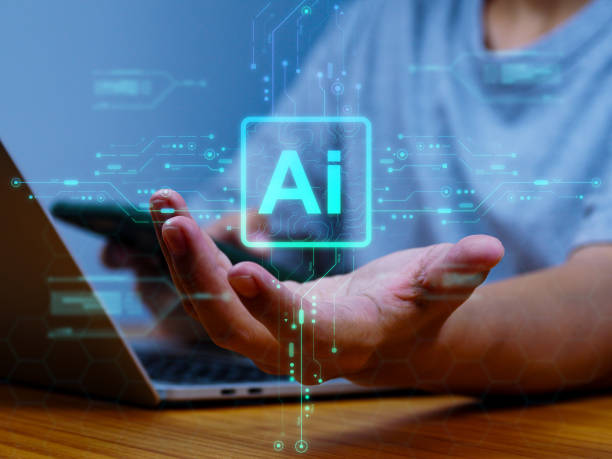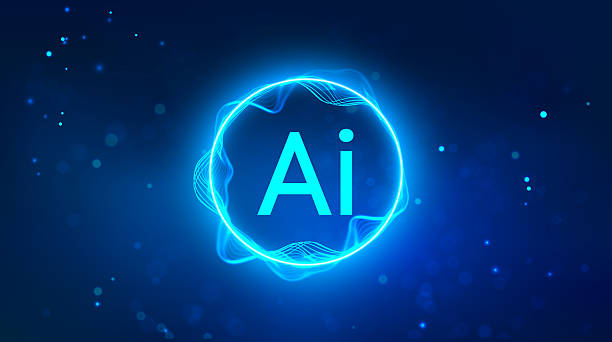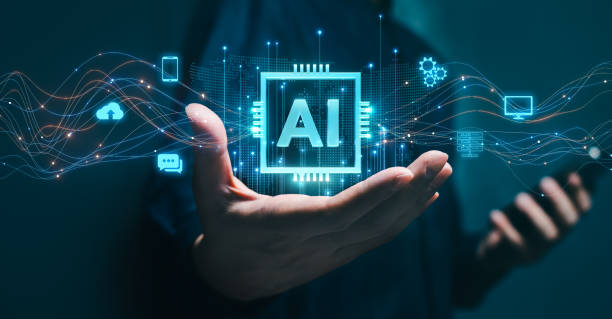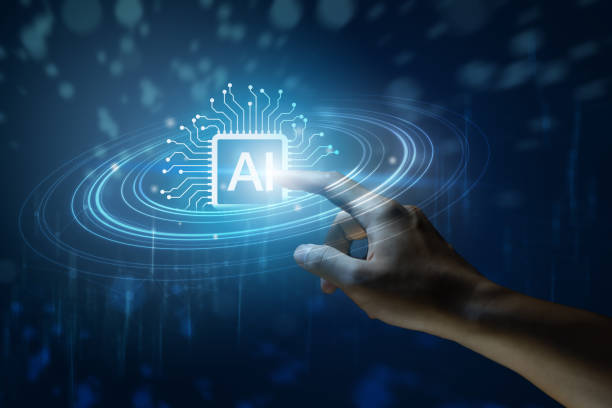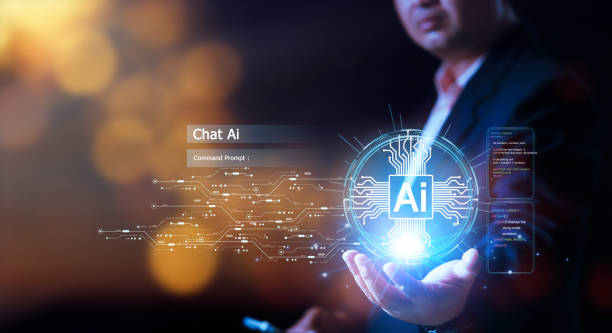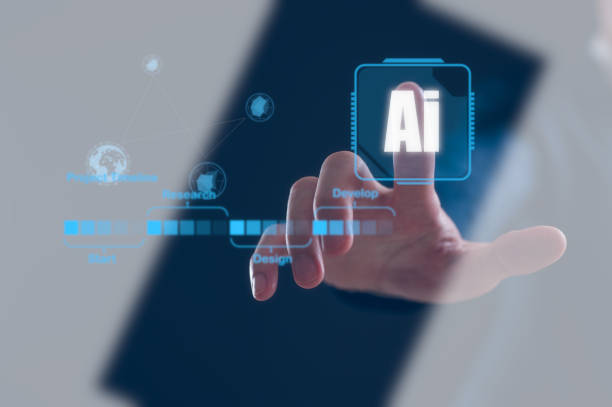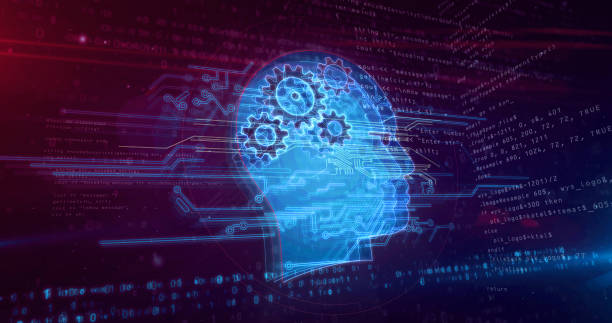What is an Artificial Intelligence Robot and How Does it Work?
#Artificial Intelligence (AI) Robot is an integrated system that uses artificial intelligence (AI) to perform various tasks, usually automatically.
These robots can be physical, such as industrial robots on production lines, or virtual, such as chatbots or voice assistants.
The basis of an AI robot is to receive data from the environment (through sensors or user input), process this data using #Artificial_Intelligence and machine learning algorithms, and then perform the appropriate action.
This action can be physical movement, answering a question, or executing an instruction.
#Machine_Learning allows the AI robot to improve its performance over time based on new data and adapt to different conditions.
AI robots have a very wide range of applications, including:
- Industry (automation of production lines, quality inspection)
- Medicine (robotic surgery, disease diagnosis)
- Customer service (chatbots, answering questions)
- Education (private tutoring, providing educational content)
- Entertainment (toy robots, video games)
In fact, any system that can act intelligently and use data to improve its performance can be considered an AI robot.
Checking Wikipedia on this matter is not without merit.
Tired of losing business opportunities due to not having a professional company website? Don’t worry anymore! With Rasaweb’s corporate website design services:
✅ Your brand’s credibility and professionalism will increase.
✅ You will attract more customers and sales leads.
⚡ Get a free consultation to get started now!
Types of AI Robots; From Chatbots to Industrial Robots
AI robots are designed and built in various types, each suitable for specific applications.
One of the most common types is chatbots, which are used as virtual assistants on websites and messaging apps.
These robots are capable of understanding and answering user questions using Natural Language Processing (NLP).
Another type of AI robot is industrial robots, which are used in factory production lines to perform repetitive and heavy tasks.
These robots usually have mechanical arms that can move and assemble parts with high precision.
Service robots are another type of AI robot designed to perform household tasks such as vacuuming and cleaning.
These robots usually have sensors that help them move around the environment and avoid colliding with obstacles.
Surgeon robots are one of the most advanced types of AI robots that are used in operating rooms to perform complex surgeries.
These robots are usually controlled by surgeons and can make incisions and sutures with very high precision.
Finally, space robots are designed to explore planets and other celestial bodies.
These robots usually have scientific equipment that helps them take samples and send data back to Earth.
In short, there are many different types of AI robots, each designed for specific applications.
From simple chatbots to advanced surgical robots, these systems play an important role in our lives.
It is also worth mentioning that Software Robots are also widely used today.
Click here to preview your posts with PRO themes ››
Advantages and Disadvantages of Using Artificial Intelligence Robots
There are many advantages to using artificial intelligence robots.
These robots can perform repetitive and dangerous tasks with high accuracy and speed, which leads to increased productivity and reduced costs.
Also, an AI robot is able to work continuously and without fatigue, which is very valuable in environments that require 24-hour activity.
In the field of medicine, surgical robots can perform complex surgeries with greater precision and reduce the risk of side effects.
In industry, industrial robots can reduce human error and improve product quality.
However, there are also disadvantages to using AI robots.
One of the most important disadvantages is the high cost of designing, building and maintaining these robots.
Also, AI robots can cause the loss of human jobs, especially in industries that require manual labor.
Ethical issues are also another challenge in using AI robots.
For example, who is responsible for an accident if an AI robot injures someone while performing a task? In addition, there are concerns about the misuse of AI robots for malicious purposes.
In general, the use of AI robots has its own advantages and disadvantages and should be carefully considered, taking into account all aspects.
| Advantages | Disadvantages |
|---|---|
| Increased productivity | High cost |
| Reducing errors | Job loss |
| Performing dangerous tasks | Ethical issues |
Applications of AI Robots in Various Industries
AI robots have wide applications in various industries and are increasingly evolving.
In the manufacturing industry, industrial robots can perform repetitive and heavy tasks with high accuracy and speed, which leads to increased productivity and reduced costs.
In the field of medicine, surgical robots can perform complex surgeries with greater precision and reduce the risk of side effects.
Also, pharmacist robots can dispense drugs with high accuracy and prevent medication errors.
In the transportation industry, self-driving cars can reduce traffic and improve road safety.
In the field of customer service, chatbots can answer customer questions and solve their problems.
In the agricultural industry, farmer robots can harvest crops and identify pests.
In the military industry, war robots can be used in dangerous environments instead of human soldiers.
In general, AI robots have diverse applications in various industries and can help improve efficiency, reduce costs, and increase safety.
AI robots have the potential to transform and improve processes in every industry.
Are you worried about the low conversion rate of your online store and not having the desired sales?
Rasaweb is your expert solution for having a successful online store.
✅ Significant increase in conversion rate and sales
✅ Professional and user-friendly design to satisfy customers
⚡ Are you ready to transform your online sales? Get a free consultation!
Challenges of Developing and Deploying AI Robots
The development and deployment of AI robots is associated with several challenges.
One of the most important challenges is the high cost of designing, building and maintaining these robots.
Building an AI robot requires experienced specialists in various fields, including #Robotics_Engineering, #Artificial_Intelligence and #Programming.
Also, AI robots require advanced hardware and software, which are costly.
Another challenge is collecting and processing the data needed to train AI robots.
For an AI robot to function effectively, it needs a large amount of training data.
Collecting this data can be time-consuming and costly.
Also, processing this data requires strong computing infrastructure.
Another challenge is the ethical issues associated with the use of AI robots.
For example, who is responsible for an accident if an AI robot injures someone while performing a task? In addition, there are concerns about the misuse of AI robots for malicious purposes.
In general, the development and deployment of AI robots is associated with several challenges that should be carefully considered, taking into account all aspects.
Attention to the considerations of AI Ethics is also important.
The Future of AI Robots; What to Expect?
The future of AI robots is very bright and full of potential.
Recent advances in the fields of artificial intelligence, machine learning, and robotics promise the development of robots with much more advanced capabilities.
In the future, it can be expected that AI robots will play a more prominent role in our lives and will be used in various fields, including industry, medicine, transportation, and customer service.
AI robots will be able to perform more complex tasks and interact more intelligently with their environment.
Also, AI robots will be able to cooperate with humans and help them perform tasks.
For example, surgical robots will be able to perform more complex surgeries with greater precision, and service robots will be able to fully automate household tasks.
However, the development of AI robots is also associated with challenges.
One of the most important challenges is the ethical issues associated with the use of these robots.
For example, who is responsible for an accident if an AI robot injures someone while performing a task? In addition, there are concerns about the misuse of AI robots for malicious purposes.
In general, the future of AI robots is very bright and full of potential, but it should be carefully considered, taking into account all aspects.
Machine Learning and Its Role in AI Robot Development
Machine learning plays a vital role in the development of AI robots.
In fact, machine learning allows robots to learn from data and improve their performance.
Without machine learning, robots will not be able to perform complex tasks and adapt to changing environments.
Machine learning algorithms allow robots to identify patterns in data, make decisions, and solve problems.
For example, an AI robot designed to diagnose disease can learn from a large amount of medical data using machine learning algorithms and improve its accuracy in diagnosing diseases.
Also, an AI robot designed for automatic driving can learn from its driving experiences using machine learning algorithms and improve its driving skills.
In general, machine learning is a powerful tool that allows AI robots to become smarter, more efficient, and more adaptable.
An AI robot without learning ability is simply a mechanical machine.
| Machine Learning Type | Application in AI Robot |
|---|---|
| Supervised Learning | Pattern recognition and prediction |
| Unsupervised Learning | Clustering and data analysis |
| Reinforcement Learning | Learning through reward and punishment |
Natural Language Processing (NLP) and Human Communication with AI Robots
Natural Language Processing (NLP) plays an important role in establishing communication between humans and AI robots.
NLP enables robots to understand, analyze, and respond to human language.
Without NLP, communication with robots would be very difficult and limited.
NLP enables robots to answer human questions, execute instructions, and interact naturally with humans.
For example, a chatbot using NLP can answer customer questions and solve their problems.
Also, a voice assistant using NLP can understand and execute human voice instructions.
In general, NLP is a powerful tool that enables AI robots to communicate more effectively with humans.
An AI robot with language comprehension capabilities can be a valuable collaborator and companion.
Are you losing potential customers due to an unprofessional website? Rasaweb is your answer! With our specialized corporate website design services:
✅ Enhance the credibility and position of your business
✅ Experience attracting more targeted customers
⚡ Act now to get a free consultation!
Security of AI Robots; Threats and Solutions
The security of AI robots is a very important issue that should be given special attention.
AI robots are exposed to various security threats, including cyberattacks, data manipulation, and abuse.
If an AI robot is cyberattacked, its performance may be disrupted or it may disclose sensitive information.
Also, if the data used to train an AI robot is manipulated, the robot may make incorrect decisions.
To prevent these threats, appropriate security measures should be taken.
These measures include the use of encryption, strong authentication, and continuous monitoring of robot performance.
Also, it should be ensured that the data used to train robots is collected from reliable sources and protected against manipulation.
In general, AI robot security is a complex issue that requires the cooperation of various experts.
Security must be considered from the outset in the design and development of robots.
An insecure AI robot can create serious risks.
Will AI Robots Replace Humans?
The question of whether AI robots will replace humans is one of the controversial and popular questions in today’s world.
While AI robots are capable of performing many tasks that were previously performed by humans, this does not mean that they will completely replace humans.
In fact, it seems that the future is moving towards cooperation between humans and robots.
Robots can perform repetitive and heavy tasks, while humans can focus on creative and strategic tasks.
Also, humans have social and emotional skills that robots lack.
These skills are essential for performing many tasks, including communicating with customers, managing teams, and solving complex problems.
Therefore, it seems that AI robots and humans can work more effectively together.
However, it is possible that in some industries, robots will replace some human jobs.
For example, industrial robots may replace some production line workers.
To reduce the negative effects of this replacement, special attention should be paid to training and retraining the workforce.
In general, the future of work with AI robots depends on the interaction and cooperation of humans and machines.
New AI Roles are also emerging.
FAQ
| Question | Answer |
|---|---|
| What is an AI robot? | An AI Robot is a machine capable of understanding the environment, reasoning, learning, and making decisions to perform tasks independently. |
| What is the difference between ordinary robots and AI robots? | Ordinary robots perform repetitive tasks based on prior programming, while AI robots can learn from experience, interact dynamically with the environment, and even behave in a way that resembles human intelligence. |
| What are the main applications of AI robots? | They are used in industries (manufacturing, assembly), medicine (surgery, diagnosis), services (customer support, domestic), exploration (space, underwater) and many other fields. |
| What technologies are used to build AI robots? | Machine Learning, Computer Vision, Natural Language Processing, Deep Learning, and Robotics are among the key technologies. |
| Can AI robots have emotions? | Currently, robots do not have emotions in the human sense. They can identify and respond to emotions, but they do not experience emotions themselves. |
| What are the main challenges in developing AI robots? | Safety, reliability, ethics, autonomy, adaptability to complex environments, and natural interaction with humans are important challenges. |
| How are AI robots trained? | They are usually trained using large amounts of data, machine learning algorithms, and deep learning to identify patterns and make decisions. |
| Examples of AI robots in everyday life? | Smart robotic vacuum cleaners, customer support chat robots, self-driving cars, and surgical robots in hospitals. |
| Are AI robots a threat to human jobs? | Some repetitive jobs may be automated, but at the same time, robots can increase productivity and create new jobs in the development, maintenance and monitoring of these systems. |
| How is the future of AI robots predicted? | They are expected to become smarter, more autonomous, and capable of performing more complex tasks, and to interact more closely with humans in various environments. |
And other services of Rasa Web advertising agency in the field of advertising
Intelligent Social Media: Professional optimization for digital branding using marketing automation.
Intelligent Marketing Automation: Professional optimization to increase sales using custom programming.
Intelligent Advertising Campaign: A combination of creativity and technology for online growth through custom programming.
Intelligent Digital Branding: A combination of creativity and technology for managing campaigns through attractive user interface design.
Intelligent UI/UX: A professional solution to increase sales by focusing on attractive user interface design.
And more than hundreds of other services in the field of internet advertising, advertising consulting and organizational solutions
Internet Advertising | Advertising Strategy | Advertorial
Resources
The future of AI and possible scenarios (Wired)
,What is Artificial Intelligence? (IBM)
,Comprehensive Guide to Artificial Intelligence (Built In)
,Microsoft Research on Artificial Intelligence
? To reach the peaks of success in the digital world, Rasaweb Digital Marketing Agency, with expertise in SEO, content production and user-friendly website design, paves the way for your business growth.
📍 Tehran, Mirdamad Street, next to the Central Bank, South Kazerun Alley, Ramin Alley No. 6
“`

